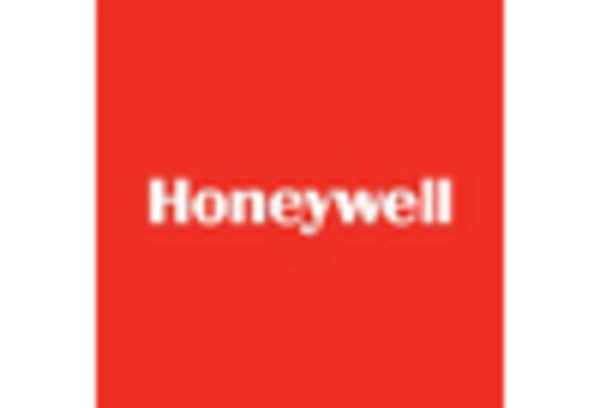Regulatory Compliance and Standards
The Operator Training Simulator Market is significantly influenced by stringent regulatory compliance and safety standards imposed by various governing bodies. Industries such as aviation, oil and gas, and nuclear power are subject to rigorous regulations that mandate comprehensive training for operators. These regulations often require organizations to demonstrate that their personnel are adequately trained to handle emergency situations and operate equipment safely. As a result, the demand for operator training simulators is likely to increase, as these tools provide a controlled environment for training that meets regulatory requirements. The Operator Training Simulator Market thus benefits from the necessity of compliance, as organizations seek to avoid penalties and ensure the safety of their operations.
Rising Demand for Skilled Operators
The Operator Training Simulator Market experiences a notable increase in demand for skilled operators across various sectors, including manufacturing, energy, and transportation. As industries evolve, the need for proficient personnel who can navigate complex machinery and systems becomes paramount. According to recent data, the demand for skilled operators is project logistics to grow by approximately 10% annually, driven by technological advancements and the increasing complexity of operations. This trend underscores the necessity for effective training solutions, positioning operator training simulators as essential tools for organizations aiming to enhance workforce capabilities. The Operator Training Simulator Market is thus poised for growth as companies invest in training programs that ensure their operators are well-equipped to handle modern challenges.
Advancements in Simulation Technology
Advancements in simulation technology are playing a crucial role in shaping the Operator Training Simulator Market. Innovations in software and hardware are enabling the development of more sophisticated and realistic training simulators. These advancements allow for the creation of highly detailed environments and scenarios that closely mimic real-world operations. As a result, operators can gain valuable hands-on experience without the associated risks. The market for simulation technology is project logistics to grow, with estimates suggesting a compound annual growth rate of around 15% over the next few years. This growth is indicative of the increasing recognition of the value of high-quality training solutions. The Operator Training Simulator Market stands to benefit from these technological advancements, as organizations seek to leverage the latest tools to enhance their training programs.
Growing Emphasis on Operational Efficiency
The Operator Training Simulator Market is increasingly driven by a growing emphasis on operational efficiency within organizations. Companies are recognizing that well-trained operators can lead to reduced downtime, improved productivity, and enhanced safety. As industries strive to optimize their operations, the demand for effective training solutions becomes more pronounced. Research indicates that organizations that invest in operator training can achieve up to a 20% increase in operational efficiency. This realization is prompting companies to adopt operator training simulators as a means to ensure their workforce is adequately prepared to meet operational demands. Consequently, the Operator Training Simulator Market is likely to expand as organizations prioritize training as a key component of their operational strategies.
Integration of Virtual Reality and Augmented Reality
The integration of virtual reality (VR) and augmented reality (AR) technologies into the Operator Training Simulator Market is transforming the landscape of operator training. These immersive technologies offer realistic simulations that enhance the learning experience, allowing operators to practice in a safe environment without the risks associated with real-world operations. The market for VR and AR in training is expected to grow significantly, with estimates suggesting a compound annual growth rate of over 30% in the coming years. This trend indicates a shift towards more engaging and effective training methodologies, positioning operator training simulators as vital components in the training arsenal of various industries. The Operator Training Simulator Market is thus likely to see increased investment in these advanced technologies.


















Leave a Comment